Not long ago, my son took it upon himself to reorganize the kitchen (with the permission of his mother/boss of the house, of course...). He emptied two large drawers, threw out a huge pile of old items that had outlived their use, a tube of glue that had long dried up, torn rubber bands, empty packages and other sundry things.
When he had re-organized what was left, we discovered that there had been 27 pairs of scissors in the two drawers. How was it that when you wanted a pair of scissors, you could never find one...
Are you familiar with this scene in your home or office?
It's an infinitesimally small example of the idea of the 5S approach.
More than a few companies have begun to implement the 5S method on a high scale, even attaining excellent results, and after a certain amount of time, the excitement fades, we stop maintaining and promoting the improvement and the achievements disappear.
Why?
First, a brief reminder of what 5S is
5S is one of the models in the Lean Production Approach that originated at Toyota.
The five S's refer to the five stages in the approach:
- Sort (or in Japanese, Seiri): Discard everything superfluous in your work environment.
- Set in order (or in Japanese, Seiton): Set a designated place for each item and each item shall be set in its place.
- Shine (or in Japanese, Seiso): Keep a squeaky clean work environment.
- Standardize (or in Japanese, Seiketsu): Make the above a routine, via procedures.
- Sustain (or in Japanese, Shitsuke): It is management responsibility to maintain standards.
The two hardest stages to attain are the first (sorting) and the last (sustaining).
The sorting stage is hard to attain for two principal reasons: first, it's the first stage, beginning the journey. Employees and management have not yet identified the advantage in implementing the method. Second, sorting also includes the decision of what to discard.
It is hard for us to free ourselves from objects in particular and from abandonment in general. We are used to hanging on to what is familiar, what is known, and suddenly we are asked to introduce a major change in our work environment.
The sustaining stage is hard to attain, first, because it is always harder to sustain a high level of achievement and second, because this is where management comes into the picture; the CEO and management must have a great deal of commitment and determination for the organization to maintain its achievements. However, the CEO has other major issues to handle and isn't always free to include the 5S.
This article will focus on sustainment.
My blog includes several articles referring to the 5S approach.
Let's examine some of our achievements visually:
Before
https://business-excellence.co.il/en/my-blog/474-maintain-5s-over-the-years#sigProId6758070925
Two months later
https://business-excellence.co.il/en/my-blog/474-maintain-5s-over-the-years#sigProId7f4dbae754
 At Toyota's garage in Hadera, nobody has heard of the 5S, but that is the actual culture practiced there.
At Toyota's garage in Hadera, nobody has heard of the 5S, but that is the actual culture practiced there.
What does this approach give us?
When we discarded everything superfluous, we created an order that enables us to find any item we may need within a few seconds, and we tidied up the area. The work will now be much more efficient, comfortable and pleasant for your employees. As a result, the quality will rise and, of course, the satisfaction and motivation of your employees.
A company that implements the 5S approach benefits a great deal. However, it isn't always management that detects the direct link between implementation of the approach and employee morale. The further away the CEO is from the production floor, the harder it is for them to notice the direct contribution of 5S implementation to employee morale.
How do we cultivate and sustain achievement?
Working according to the 5S is a burden for your employees. They are the ones who must plan and execute the changes and the sustainment. In a personal way, they are also the first to have to make sacrifices. However, sustainment is the responsibility of the CEO.
It is fairly easy to generate preliminary enthusiasm among employees, but to maintain the enthusiasm expressed in performance requires self-control among employees and feedback from the CEO. The CEO's attention is the engine for sustainment.
Employees should monitor their work and performance according to rules. Employee involvement, their taking responsibility and self-monitoring are the cornerstones of the lean manufacturing approach.
Employees should continue to maintain achievements and to add to them through the taking of responsibility and the understanding of the need to do so.
If employees see that this matter is important to management and they obtain feedback on progress and sustainment, they will willingly play their parts. When employees see that the matter is not important to management, they will begin to bend the rules and the downwards spiral will be very swift.
The role of the CEO is expressed in monitoring, in attention to the matter, in feedback to employees and in dedicating the needed resources. The CEO's approach is the engine to sustainment.
The role of the employees is expressed in their own weekly monitoring and in continuous sorting, putting in order and tidying up. The company should construct and develop the required routines and monitoring forms that are convenient for employee use.
Monitoring form: It is recommended that the monitoring performed by employees on progress and implementation be executed with a standard monitoring form. I have found that this form may be a little difficult for someone not familiar with the required skills, and I am currently preparing a similar but simpler form.
Review
The work approach known as 5S is one of the models used to begin the implementation of lean manufacturing.
To stay with it and turn it into a working way of life requires the CEO's involvement and determination.



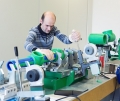
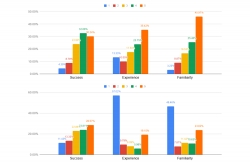

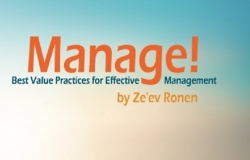

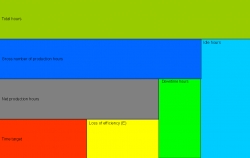

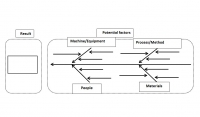


 My First Book: Manage! Best Value Practices for Effective Management
My First Book: Manage! Best Value Practices for Effective Management